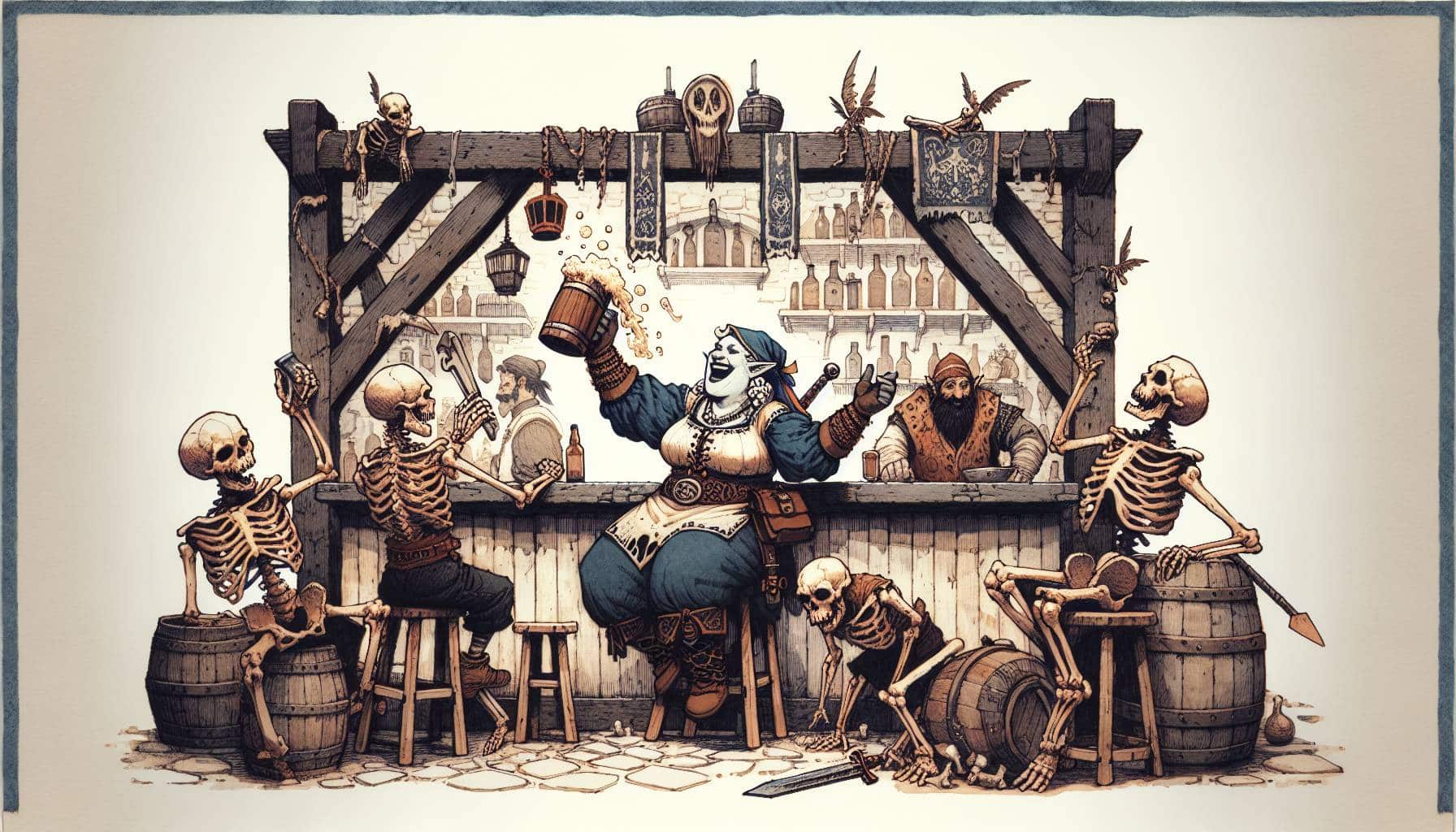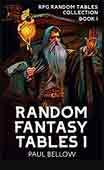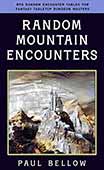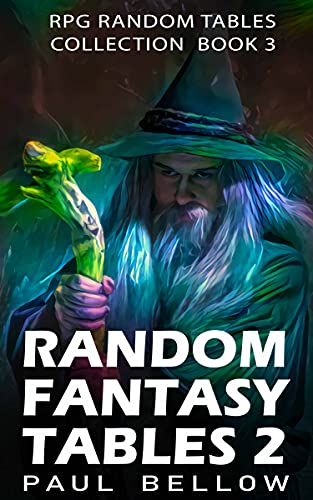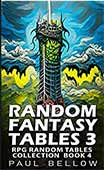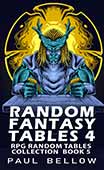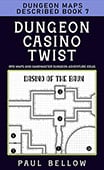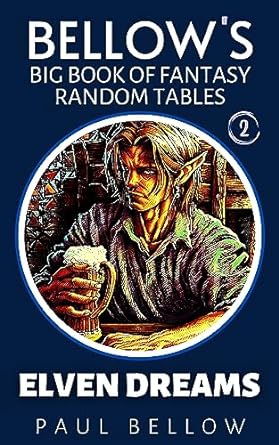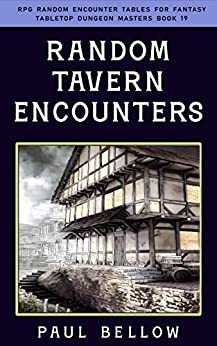Ah, necromancy. The very word conjures images of shadowy figures, dusty tomes, and shambling skeletal minions. But in the deep dark realms of Dungeons & Dragons, necromancy can be so much more—a source of fun, surprises, and profit! While it’s true that dabbling in the dark arts might traditionally seem grim, the playful potential of necromancy can turn a mundane campaign into a theater of chaos and laughter. Imagine the potential for in-game jokes as your undead minion takes up a hobby in interpretive dance, or the profit to be made by hiring out your reanimated assistants for manual labor at a discount rate. Indeed, the necromantic arts are ripe for exploration beyond the typical tropes.
The addition of necromancy into a campaign can stir up unexpected scenarios that keep players on their toes. Whether it’s the comic relief of an undead companion with a penchant for slapstick, or a thought-provoking moral dilemma about the rightful use of corpses, these scenarios add depth to any storyline. Player amusement is often amplified when their necromantic ventures result in hilariously unintended consequences, like a skeleton becoming a local hero after accidentally defeating a town’s threat while mistakingly trying to fetch a stick.
Necromancy opens doors not only to narrative complexity but also to player creativity. A clever necromancer can find numerous ways to profit from their macabre skills—both in the form of loot and the amusement of fellow players. When employed wisely, necromancy can become an integral part of character development, plot twists, and even the economic systems within the game. When the line between the mischievous and the malevolent is artfully blurred, every session becomes an opportunity for fun and fortune.
So, players and Dungeon Masters alike, take up the bone-tipped wand and delve into the whimsical side of necromancy. Your party will thank you for the laughter, the memorable moments, and perhaps a bit of gold in their pockets from their unexpected necromantic adventures.
The Allure of Necromancy: More Than Just Bones
Necromancy’s allure is undeniable, as it offers players and Dungeon Masters a dark yet fascinating palette to paint their imaginary worlds. Players might be drawn to its eerie charm—after all, who hasn’t been intrigued by the secrets of life and death? Necromancy’s thematic depth allows storytellers to explore profound questions about mortality, power, and the ethics of playing god, all while seasoning the narrative with humor and intrigue.
In a game session, necromancy can serve as both a source of comedy and a fulcrum for suspenseful drama. Imagine the necromancer’s comical attempts to fit in with the living, perhaps raising a skeleton to fetch their cloak or using a reanimated zombie as a butler. Simultaneously, their darker, more profound motivations can drive compelling narratives involving forbidden knowledge and tragic backstories that touch the hearts of players.
Try my AI Tabletop RPG generators...and an extensive library of content!
Character development is another key factor that makes necromancy alluring. Playing a necromancer offers dynamic opportunities for personal growth, moral dilemmas, and unexpected alliances. The necromancer might start as a misguided soul seeking forbidden power but evolve into a misunderstood hero or a tragic villain. These complexities not only enrich character arcs but also allow for captivating plot twists that keep the campaign fresh and exhilarating.
Crafting Memorable Necromancers
Creating a compelling necromancer character, whether as a Player Character (PC) or Non-Player Character (NPC), means infusing them with distinct personality traits and motivations. Think beyond the stereotypical brooding villain; a necromancer can be a charming eccentric, a misunderstood scholar, or even a reluctant hero. Their quirks—such as an obsession with perfecting a sinister laugh or a soft spot for flowers—can make them entertaining and memorable.
By giving necromancers unique motivations, like seeking knowledge to save a loved one or reclaiming a lost kingdom, they become more than their magical abilities. They transform into characters who drive the story with their ambitions and flaws, providing rich fodder for storytelling and player engagement.
When designing necromancers, humor and creativity are key to sidestepping clichés and ensuring they stand out. Avoid the tired trope of the power-hungry sorcerer cloaked in black by injecting humor into their backstory or goals. Perhaps they were once a failed painter who found more success animating still-life subjects. By respecting the balance between humor and gravity, your necromancers will not only entertain but also resonate with players long after the campaign ends.
⚔️ Fantasy RPG Random Tables Books
Make life as a Gamemaster easier…
If you play Dungeons & Dragons, Pathfinder, or other fantasy RPGs, this
RPG random tables series
is packed with encounters, NPCs, treasure, and more. Available in eBook or print—either way, you’ll have a wealth of adventure ideas at your fingertips.

Essential Spells for the Enterprising Necromancer
A necromancer’s spellbook is a treasure trove of potential for both chaos and profit. Key necromancy spells can bring fun and unpredictability to gameplay. Consider “Animate Dead,” a staple for raising minions—perfect for labor or perhaps a surprise dance number at a tavern. Similarly, “Bestow Curse” can be used creatively to outwit foes or to play practical jokes on a rival adventuring party.
The “Speak with Dead” spell offers opportunities for humorous or dramatic exchanges with deceased characters who might have enlightening—or entirely irrelevant—things to say. Used creatively, these spells can turn ordinary moments into extraordinary, laughter-filled memories, or unexpected plot points.
For the enterprising necromancer, there’s always a way to spin magic into gold. Imagine using “Feign Death” as part of an elaborate heist, or “Blight” to mirthfully ruin the crops of a rival village while offering revitalization services on the sly. Each spell carries potential for immensely entertaining, profitable, and often chaotic outcomes.
Here are some creative uses for necromancy spells:
- Raise recently deceased rodents to find hidden traps.
- Animate skeletons to serve as a skeletal security team at events.
- Use “Speak with Dead” to solve murder mysteries (or cause arguments at family dinners).
- Employ “Bestow Curse” as a makeshift lie detector.
- Reanimate ancient historians to cheat on history tests.
- Use “Feign Death” to fake your own demise during awkward social gatherings.
- Cast “Animate Dead” to provide an impromptu music band for parties.
- Use “Blight” to force town negotiations by threatening the harvest.
- Animate animal skeletons for a nightmarish, yet entertaining, circus.
- Create an undead choir to serenade your adventuring party.
- Animate broomsticks to reduce chores around the camp.
- Use “Revivify” as an insurance policy for reckless adventurers.
Balancing power and entertainment is crucial to ensuring players enjoy the whimsical side of necromancy without derailing the campaign. Dungeon Masters should guide players to use their spells creatively and ethically while maintaining the fun and suspense of the story.
Necromancy in Different Campaign Settings
Necromancy’s adaptability allows it to be woven seamlessly into various campaign settings, whether urban, wilderness, high fantasy, or horror. In urban settings, necromancy can add a layer of mystery and intrigue, with undead creatures roaming the cobblestone streets at night, causing both awe and fear among the townsfolk.
In the wilderness, necromancy might tie into primal themes of life and death cycles. Here, necromancers could be seen as shamanic figures, communing with the spirits of the land. High fantasy settings offer a grand stage for necromancy’s dramatic elements, casting necromancers as powerful figures involved in the eternal struggle between good and evil.
Horror settings naturally lend themselves to necromancy’s darker side, where the undead are omnipresent threats and necromancers blur the line between saviors and monsters. Each setting offers unique opportunities for comedic or dramatic storytelling, depending on how necromancy is employed.
| Campaign Setting | Necromancy Themes | Comedic or Dramatic Opportunities |
|---|---|---|
| Urban | Mysterious nocturnal events | Skeletal messengers bringing wrong letters |
| Wilderness | Primal life-death cycles | Friendly ghosts of the forest offering help |
| High Fantasy | Epic struggles | A bumbling apprentice necromancer in a hero’s quest |
| Horror | Omnipresent undead | Undead mistaking party members for celebrities |
| Steampunk | Replacing machinery with undead parts | Undead working in factories, causing mayhem |
| Pirate | Cursed treasure | Ghost pirates fighting over etiquette |
| Desert | Ancient tombs | Sand zombies getting lost in sandstorms |
| Arctic | Frozen undead | Skeletons ice-skating comically on thin ice |
| Jungle | Spirits of nature | Communal dance with ghosts at night |
| Feudal | Haunted castles | Poltergeist interrupts royal dinners |
Leveraging setting nuances allows for different tones and approaches with necromancy, enriching narratives. A light-hearted urban adventure might use zombies for comedic effect, while a high fantasy epic could feature the noble quest to harness or defeat necromantic power.
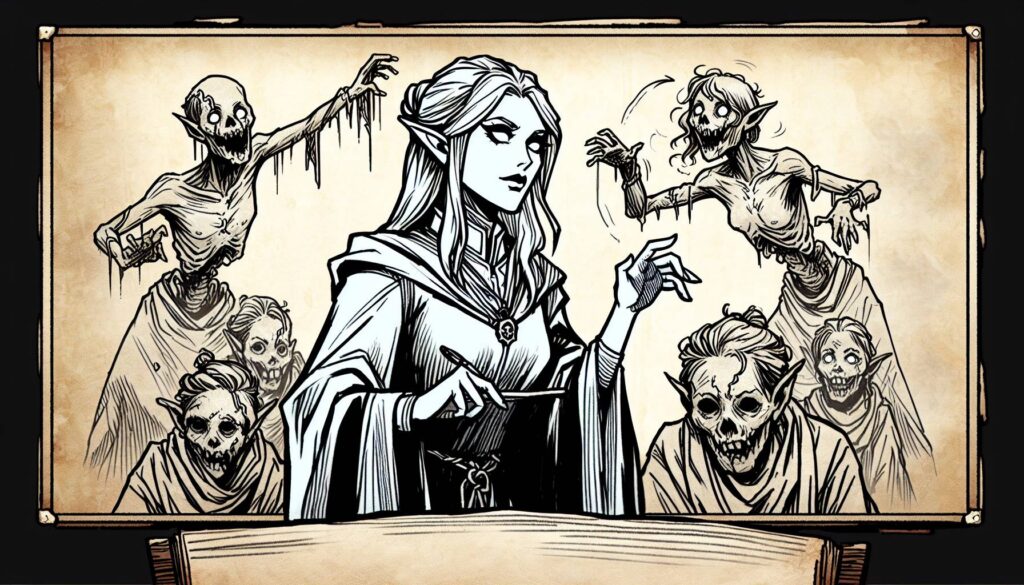
Skeletons with Personality: Minion Management
The whimsical side of necromancy shines when managing undead minions with distinct personalities. These skeletal or zombie companions needn’t remain soulless servants; they can become comedic relief or unexpected heroes. A skeleton with stage fright or a zombie who dislikes brains offers amusing possibilities in storytelling.
By giving these minions quirks and traits, they become more than tools—instead, they are characters of their own. A skeleton might constantly lose a limb, much to their chagrin, or a zombie could develop an unexpected talent for sculpture or poetry.
Here are some ideas for unique undead minion quirks and traits:
- A skeleton with a fear of dogs.
- A zombie that loves ballroom dancing.
- An undead who compulsively counts everything.
- A skeleton who tries to befriend every living creature.
- A zombie obsessed with collecting shiny objects.
- A skeleton who believes they were a famous bard in life.
- An undead with a squeaky joint that gives them away.
- A zombie who leaves flowers for fallen foes.
- A skeleton who writes dreadful poetry.
- A zombie who believes they’re still alive.
- A skeleton that practices terrible jokes.
Using minions to create memorable party interactions and unexpected plot twists adds layers to the campaign. Perhaps a skeleton’s forgotten memory becomes the key to solving a larger mystery, or their antics lead to alliances with unlikely allies. These moments of levity and surprise make the story vibrant and memorable.
⚔️ Fantasy RPG Random Tables Books
Make life as a Gamemaster easier…
If you play Dungeons & Dragons, Pathfinder, or other fantasy RPGs, this
RPG random tables series
is packed with encounters, NPCs, treasure, and more. Available in eBook or print—either way, you’ll have a wealth of adventure ideas at your fingertips.
Balancing Humor and Horror
The art of balancing necromancy’s humorous and dark aspects ensures no matter how whimsical, the thematic gravity of necromancy isn’t lost. This balance can keep players engaged and immersed in the narrative, providing a rollercoaster of emotions from laughter to suspense.
To maintain tension without sacrificing humor, DMs should use comedic elements to accentuate the gravity of a situation. A zombie suddenly realizing it was once an accomplished knight can infuse humor into tense moments, offering levity when needed. However, these humorous scenarios should never overshadow the story’s core themes or diminish the serious elements of necromancy.
| Humorous Scenarios | How to Maintain Tension |
|---|---|
| Skeletons holding a talent show | Build tension with a rival undead troupe |
| Zombies accidentally helping heroes | Introduce a looming necromantic threat |
| Undead in a sports match | Raise stakes with powerful undead rivals |
| Skeletons creating art installations | Reveal the art is part of a dark ritual |
| Minions forming a band | Band’s music awakens a sleeping ancient |
| Ghosts hosting a tea party | Critical piece of information revealed |
| A zombie fashion show | Discover clothes are linked to a curse |
| Skeletons re-enacting historical events | Realize history is repeating itself |
Encouraging Dungeon Masters to incorporate humor in unexpected ways can profoundly engage players, leading to unique and memorable experiences that resonate well beyond the gaming table. The infusion of humor into a campaign not only lightens the atmosphere but also fosters camaraderie and a deeper investment in the story at hand. When players are laughing together, they are more likely to feel a sense of connection, both to each other and to the world you’ve crafted.
One effective strategy is to subvert expectations. For instance, a seemingly menacing villain could have an absurd quirk or an outrageous backstory that contrasts sharply with their fearsome demeanor. Imagine a fearsome dragon that, instead of hoarding gold, collects rubber ducks, or a terrifying necromancer who is absolutely obsessed with gourmet cooking and always eager to share their latest recipes. By blending the macabre with the comedic, Dungeon Masters can disarm players and provide unexpected twists that leave everyone giggling, even in the midst of peril.
Most important (maybe!) is that the timing of humor is crucial. A cleverly timed joke can punctuate a tense moment, providing a much-needed release of tension. Players might be navigating a dark, eerie dungeon filled with lurking threats, and just when the stakes seem impossibly high, a situation arises where one of the characters accidentally activates a trap that bathes them in glitter instead of doom. The juxtaposition of a serious scenario softened by unexpected silliness not only enhances the storytelling but also allows for moments that bolster teamwork and creativity, as players rally to turn a potentially dire circumstance into an opportunity for hilarity.
It’s really crucial to strike a balance between humor and the overarching narrative. The aim is not to undermine the integrity of the world you have created but to complement it. When humor is woven seamlessly into the fabric of the campaign, it enhances the richness and complexity of the story, creating a vivid tapestry of experience that keeps players on their toes and eager for the next session.
Incorporating humor into your sessions doesn’t mean that every moment should be a gag; instead, it’s about strategically placing humorous elements where they feel natural and authentic. A well-timed quip, a ridiculous circumstance, or a character’s humorous fallout from a serious decision can add layers to the gameplay, making it not just a story of heroism and adventure, but also one of laughter and joy. In doing so, you create an engaging atmosphere that invites players to fully immerse themselves in the adventure, making every session a delightful blend of drama, action, and hilarity.
Profiting from Necromancy: A Guide for Opportunistic Players
In the world of D&D, necromancy can be a lucrative endeavor for players looking to profit within a campaign. Whether through in-game economic opportunities, reputation management, or moral conundrums, the financial allure of necromancy adds an intriguing layer to adventuring.
Players might find themselves running a spectral tavern where spirits serve spirits, or offering exorcism services to nobles with a ghostly problem. Such activities can turn a tidy profit, provided players manage their reputation carefully—being a known necromancer can bring both clients and adversaries.
The moral implications of necromantic practices should not be overlooked. With great power comes great responsibility, and players must navigate the ethical landscape of their choices. Yet, with careful planning and creative entrepreneurship, necromancy can be both a source of fun and gold.
Here are some potential profit avenues for necromancer players:
- Rent out undead for simple labor.
- Charge for ghost-busting services.
- Hold séances for wealthy clients.
- Create undead butlers for noble households.
- Offer to speak with dead for family closures.
- Sell reanimated pets to lonely villagers.
- Open a necromancy-themed performance art show.
- Create enchanted jewelry from bone fragments.
- Run an “undead transport service.”
- Sell protective charms against the undead.
- Organize underground undead fight clubs.
Aligning profit motives with character development and story arcs ensures a rich narrative experience. Players can explore their character’s growth while engaging in intriguing business ventures or ethical debates. The interplay of these elements adds depth and excitement to the campaign.
Necromantic Party Tricks
Necromancy, with its flair for the dramatic, can be a source of lighthearted fun at the D&D gaming table. Whether through illusions, animations, or spells, necromancer players can indulge in amusing party tricks that add levity to gameplay.
Consider using necromancy to host ghostly puppet shows or create seemingly haunted objects that entertain—or mildly spook—companions. These tricks not only amuse but also serve as creative outlets for player expression.
Here are some necromancy-based party tricks and pranks:
- Animate skeleton marionettes for a mini-theater.
- Use “Minor Illusion” for ghostly apparitions.
- Create a spectral waiter for a fancy dinner.
- Make a skeleton musician play catchy tunes.
- Use “Dancing Lights” as ghostly storytellers.
- Summon a friendly ghost bartender.
- Animate cutlery for a haunted dinner display.
- Use “Mage Hand” for spooky table tricks.
- Perform a séance for laughs.
- Summon a tiny undead choir for dinner music.
- Create the illusion of a haunted painting.
- Use “Thaumaturgy” to create eerie atmosphere.
- Conjure “Phantom Steed” for a spooky parade.
- Perform ghostly shadow puppetry.
Incorporating party tricks without derailing serious gameplay moments ensures the campaign remains engaging. By balancing seriousness with whimsy, necromancer players can foster a joyous atmosphere while respecting the narrative’s gravitas.
Necromancy as a Plot Device
Using necromancy as a central plot element in role-playing campaigns can serve as a powerful driving force for player decisions, shape significant world events, and create overarching narrative themes that resonate profoundly with everyone involved in the game. This dark and enigmatic form of magic, often associated with death and the manipulation of the undead, carries a weighty presence that can add layers of depth to the campaign setting. Whether it’s tied to a pivotal historical event steeped in necromantic magic or the looming threat of an undead apocalypse that casts shadows over the land, these elements can significantly enrich the narrative, bringing intrigue and complexity to the players’ experiences.
Necromancy can influence the world in various fascinating ways—through the discovery of mysterious artifacts imbued with lost necromantic power, ancient prophecies written in forgotten tongues, or even forbidden rituals engraved in the pages of dusty tomes. Such lore invites players to delve deeper into the history of their world, uncovering secrets that might lead to either salvation or ruin. Characters may find themselves irresistibly drawn to the allure of necromantic power, feeling its seductive whispers promising mastery over life and death, while others might be instinctively repelled by its dark nature, compelled instead by their moral compass or the weight of their past choices. The interactions between these differing perspectives can lead to compelling character arcs that enrich the overall story.
A necromancer’s quest for redemption, for instance, could serve as a poignant storyline, where a character who once reveled in death and domination seeks to atone for their past transgressions. This character’s internal struggle may mirror that of the party, who could be wrestling with their own ethical dilemmas regarding the use of necromantic powers. On the flip side, a villain’s nefarious plan to raise an army of the undead can provide a formidable challenge, pushing the heroes to confront their fears and their beliefs about life and death. Such stakes give players and Dungeon Masters (DMs) a rich tapestry to explore, filled with moral quandaries and emotional confrontations that transcend simple dungeon crawling or combat encounters.
Encouraging Dungeon Masters to leverage necromancy intentionally and creatively can unlock a treasure trove of storytelling opportunities. Campaigns can thus incorporate not only thrilling adventures but also moments of introspection and ethical decision-making. DMs can introduce conflicts that question the nature of power—asking players if the ends justify the means when faced with the temptation of necromancy for a good cause. Through creative encounters, intricate plots, and layered character motivations, DMs can craft engaging stories that captivate players and resonate with the dark, yet hauntingly fascinating allure of necromancy.
At the end of teh day, the integration of necromancy within a campaign allows for multifaceted narratives filled with suspense, intrigue, and emotional weight. It invites players to not merely engage in battles against undead hordes, but to reflect on what it truly means to meddle with life and death. By weaving together the threads of necromantic themes with character arcs and world-building, DMs can create immersive experiences that echo long after the game has concluded, leaving players with not only memories of battles won or lost but also profound questions about the very essence of existence. Thus, when necromancy is used thoughtfully and imaginatively, it transforms the campaign into a rich tapestry of adventure, philosophy, and meaningful engagement that players will remember long after they have hung up their dice.
Try my AI Tabletop RPG generators...and an extensive library of content!
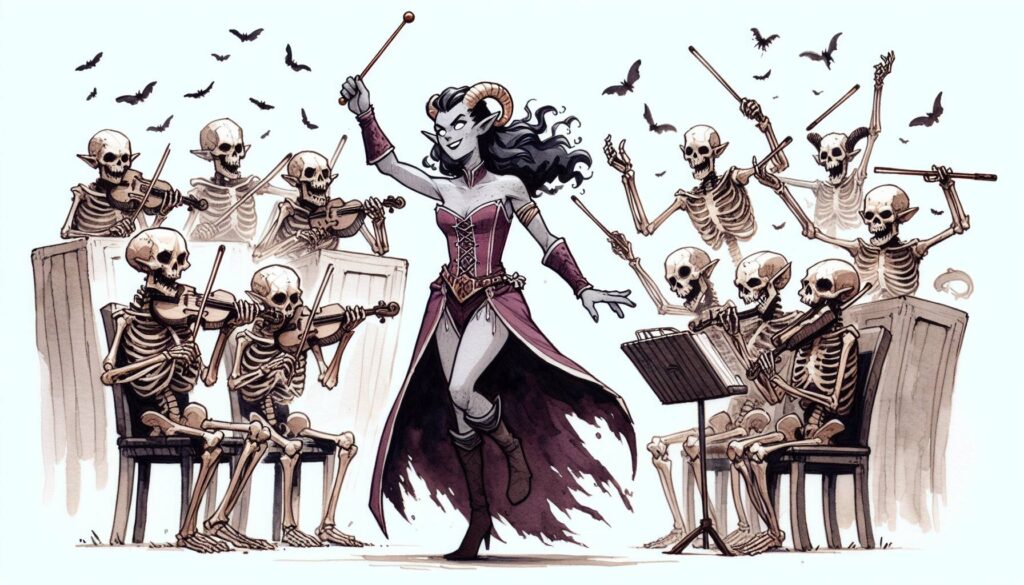
Final Thoughts on Necromancy in D&D
As we draw the curtains on this comprehensive guide to necromancy within the enchanting realms of Dungeons & Dragons, it becomes abundantly clear that the opportunities for enriching your campaigns with humor, narrative depth, and player engagement are not only vast but also exceptionally captivating. This often misunderstood aspect of magic is not merely about death and decay; rather, it opens doors to a world where the macabre can dance hand-in-hand with the whimsical. By fully embracing the quirky and eccentric facets of necromancy while also acknowledging its intrinsic darkness, players and Dungeon Masters alike have the potential to weave stories that are not just captivating but also brimming with amusement, intriguing plot twists, and unforgettable moments.
The true beauty of necromancy lies not only in its grim associations but in its transformative power to create memorable memories around the gaming table. Imagine players conjuring spellbinding, humorous undead minions that offer witty banter, or perhaps an entertaining display of ghostly party tricks that leave everyone chuckling around the dice. The notion of summoning animated skeletons to perform a chaotically comedic dance at a local tavern, for instance, is a delightful image that underscores the flexibility of this arcane discipline. The element of surprise thrives within necromancy’s shadowy embrace; what seems initially sinister can evolve into an unexpected source of laughter and camaraderie.
Necromancy can open up an array of intriguing profit-making schemes for enterprising adventurers. (I remember this one story… Ah, I’ll save that for another day. Amir doesn’t like me bragging!) For now, just picture a clever necromancer who decides to delve into the realm of entertainment, offering classes on “How to Raise an Entertaining Undead,” where the undead are not just servants but also attractions that captivate audiences at fairs and festivals. The financial rewards can be substantial, and the stories generated from such bizarre enterprises could fill volumes.
As you prepare to step into this realm of twisted magic and levity, make sure you gather your spell components with care, and dust off your grimoires filled with delightful knowledge and resources. Embarking on your necromantic adventures should come with a twinkle of mischievous excitement in your eye, as D&D’s whimsical side of necromancy eagerly awaits your creative touch. Together, let’s delve into thrilling tales that weave together the wonders of life, death, and everything in between, inviting hearty laughter and bringing to life the original spirit of adventure that has long been the hallmark of this beloved game.
So, dear adventurers, as you explore, experiment, and embark on this journey, remember that it is the camaraderie and creativity of your table that will shape your experiences. Revel in the unpredictability, embrace the darkly humorous, and, most importantly, savor every moment of the ride! Your necromantic escapades are just on the horizon, ready to unfold rich narratives filled with joy, laughter, and the occasional spine-chilling surprise that will leave all players longing for the next session. Happy enchanting, and may your necromantic stories be as vibrant as your imagination!

